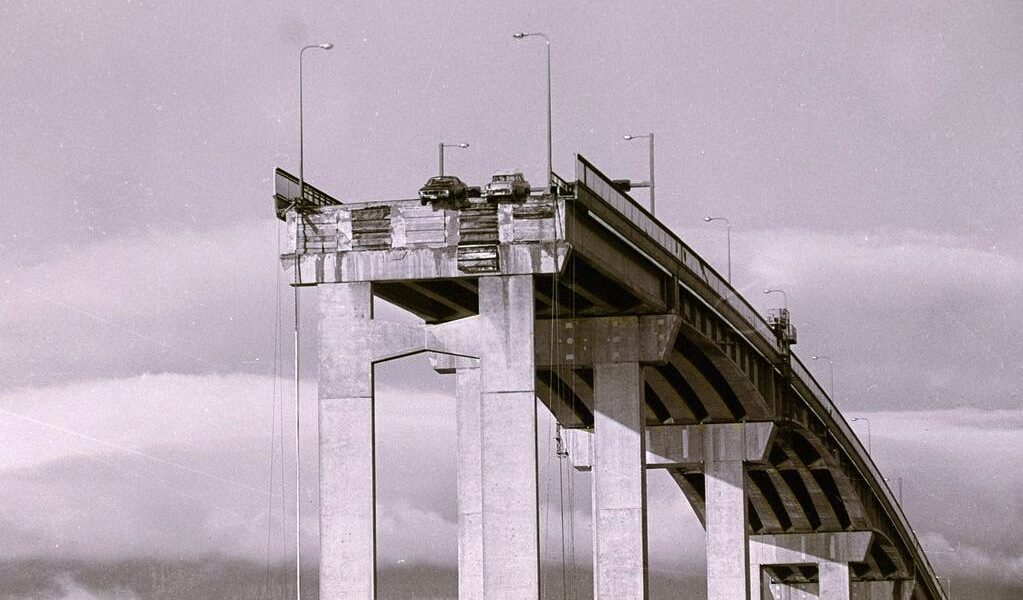The Tasman Bridge was open to traffic in August 1964 in Hobart, the capital city of Australia’s island state of Tasmania. It was a four-lane, high level concrete bridge constructed with a central navigation span for shipping. Prior to 1964, a floating bridge spanned the Derwent.
On Sunday, January 5, 1975 at 9.27 p.m. the bulk carrier Lake Illawarra collided with the Tasman Bridge. Two piers collapsed along with 127 meters of bridge decking. Four cars ran over the gap which fell 45m (150ft) into the Derwent River. Five occupants died while several others managed to escape from two vehicles which teetered on the edge of the gap. Seven crewmen from the Lake Illawarra also lost their lives.
The bulk carrier Lake Illawarra, carrying 10,000 tonnes of zinc ore concentrate, was heading up the Derwent River to offload its cargo at the Electrolytic Zinc Company in Risdon, upstream from Hobart and about 3 km from the bridge.
The ship was off course as it neared the bridge, partly due to the strong tidal current but also because of inattention by the ship’s master, Captain Boleslaw Pelc. Initially approaching the bridge at eight knots, Pelc slowed the ship to a ‘safe’ speed. Although the Lake Illawarra was capable of passing through the bridge’s central navigation span, the captain attempted to pass through one of the eastern spans.
The collapse of Tasman Bridge isolated two sides of the city which had heavily relied upon it for most daily activities. 30% of Hobart’s residents lived on the eastern shore and were effectively isolated. The day after the incident, as some 30,000 residents set out for work, they found that the former three-minute commute over the bridge had turned into a ninety-minute trip.
%2Bon%2BJanuary%2B5th%2C%2B1975.jpg)











